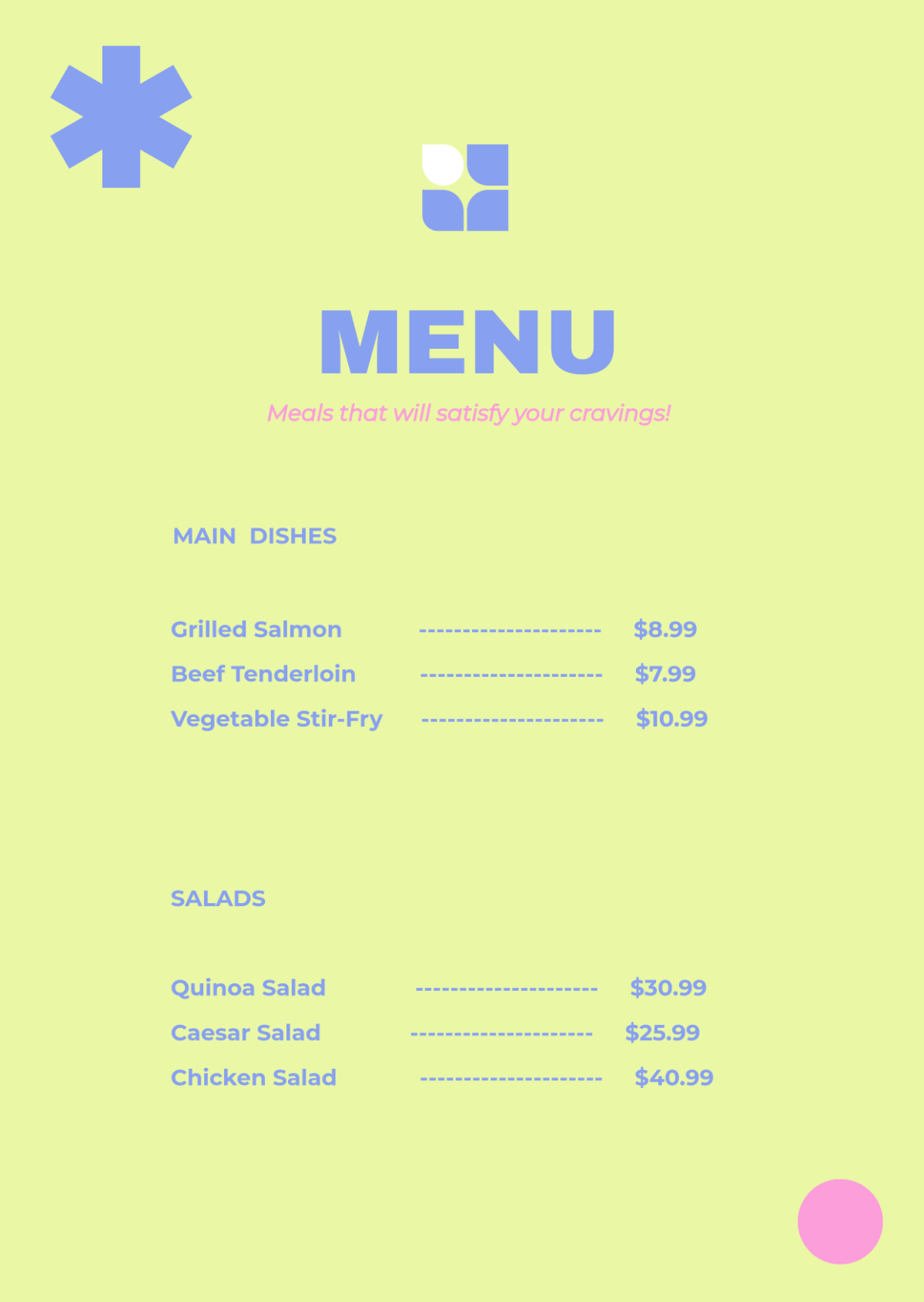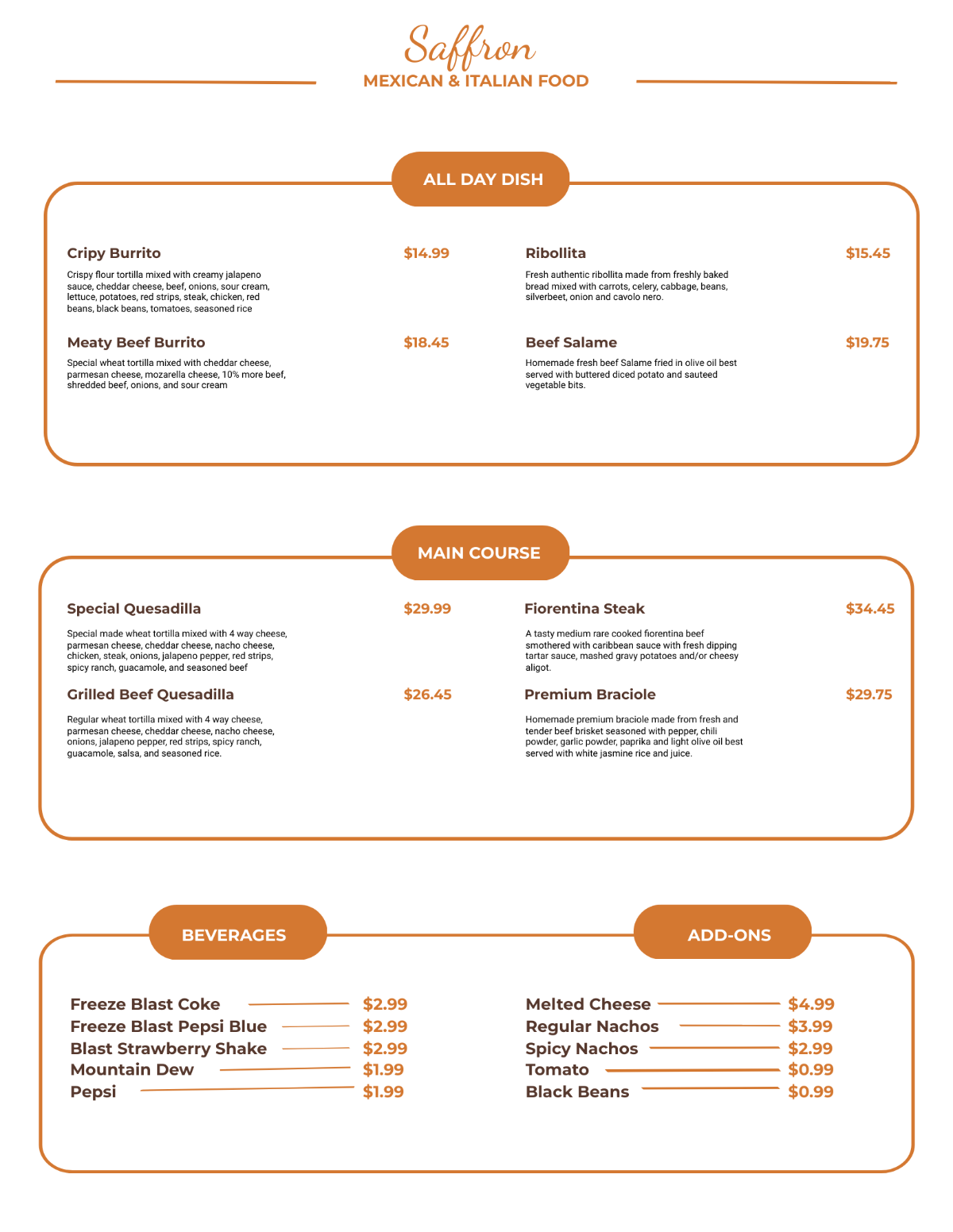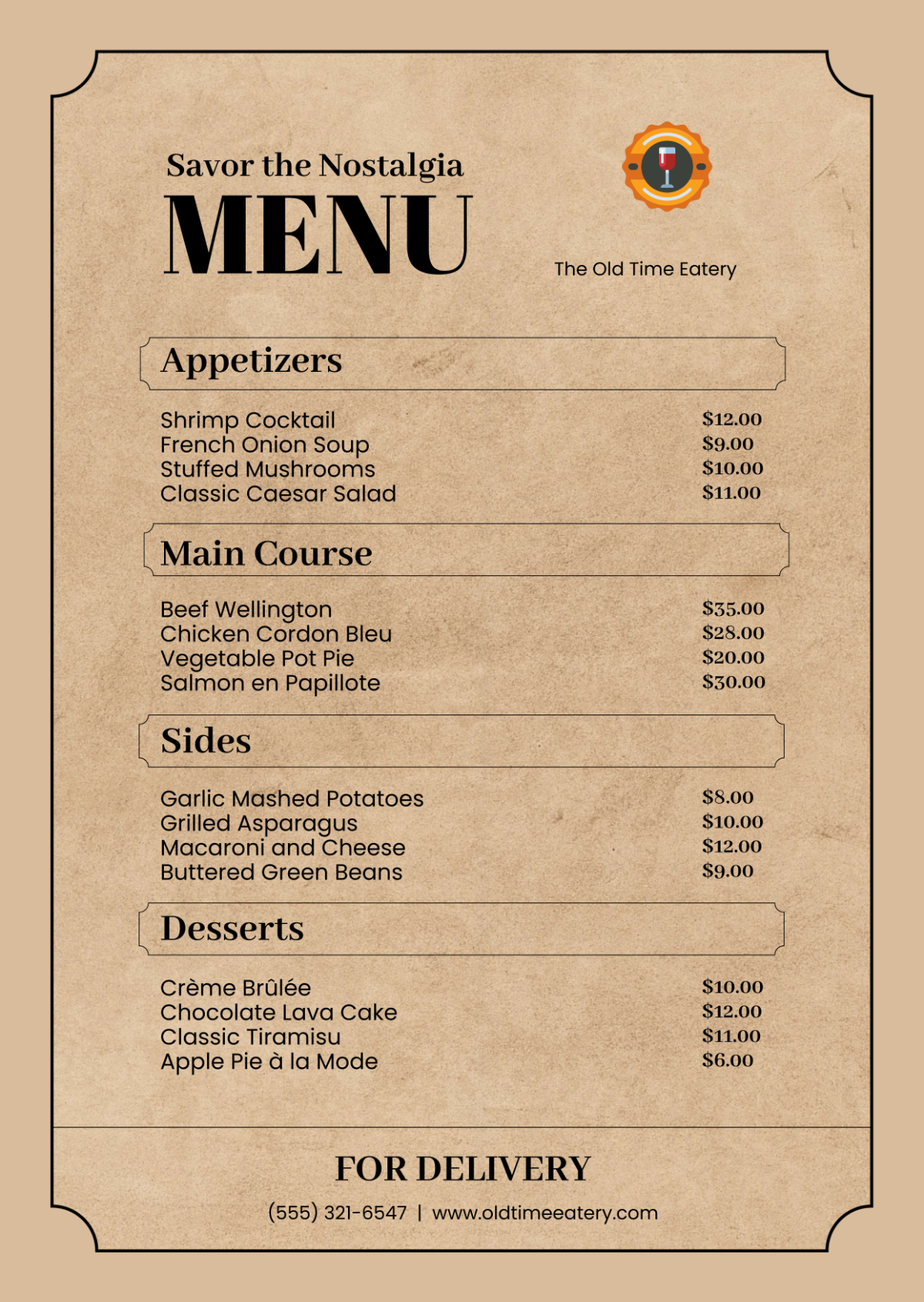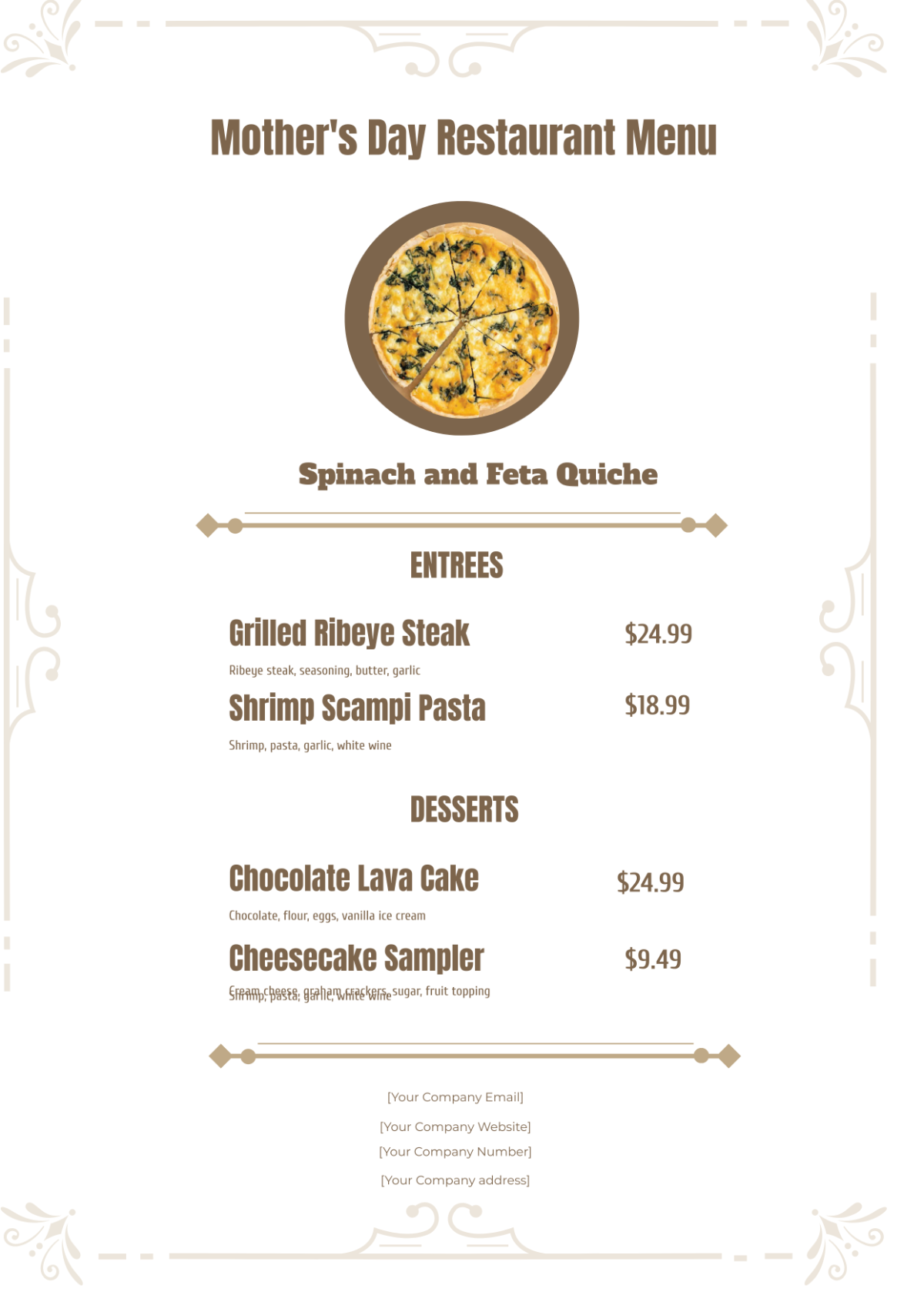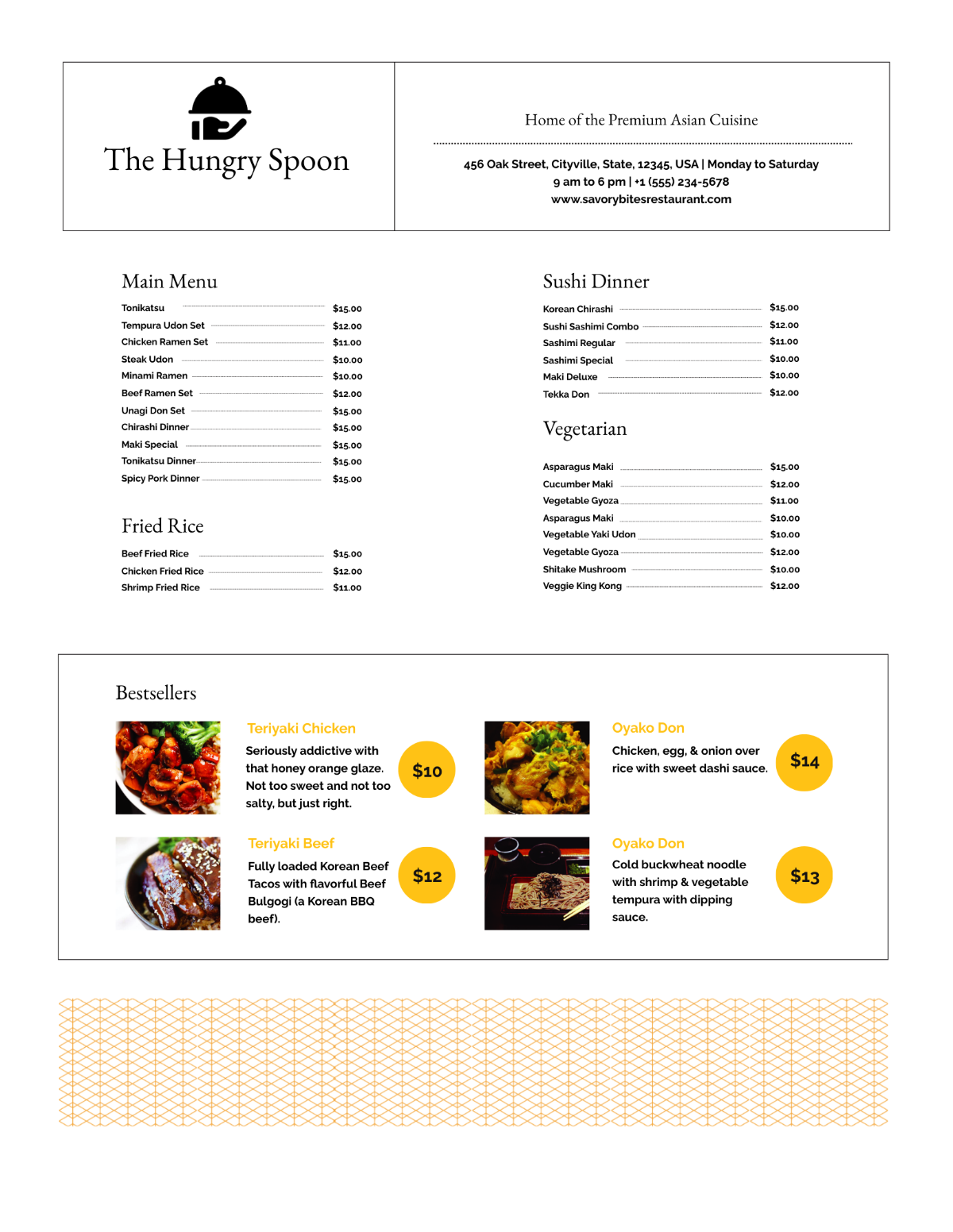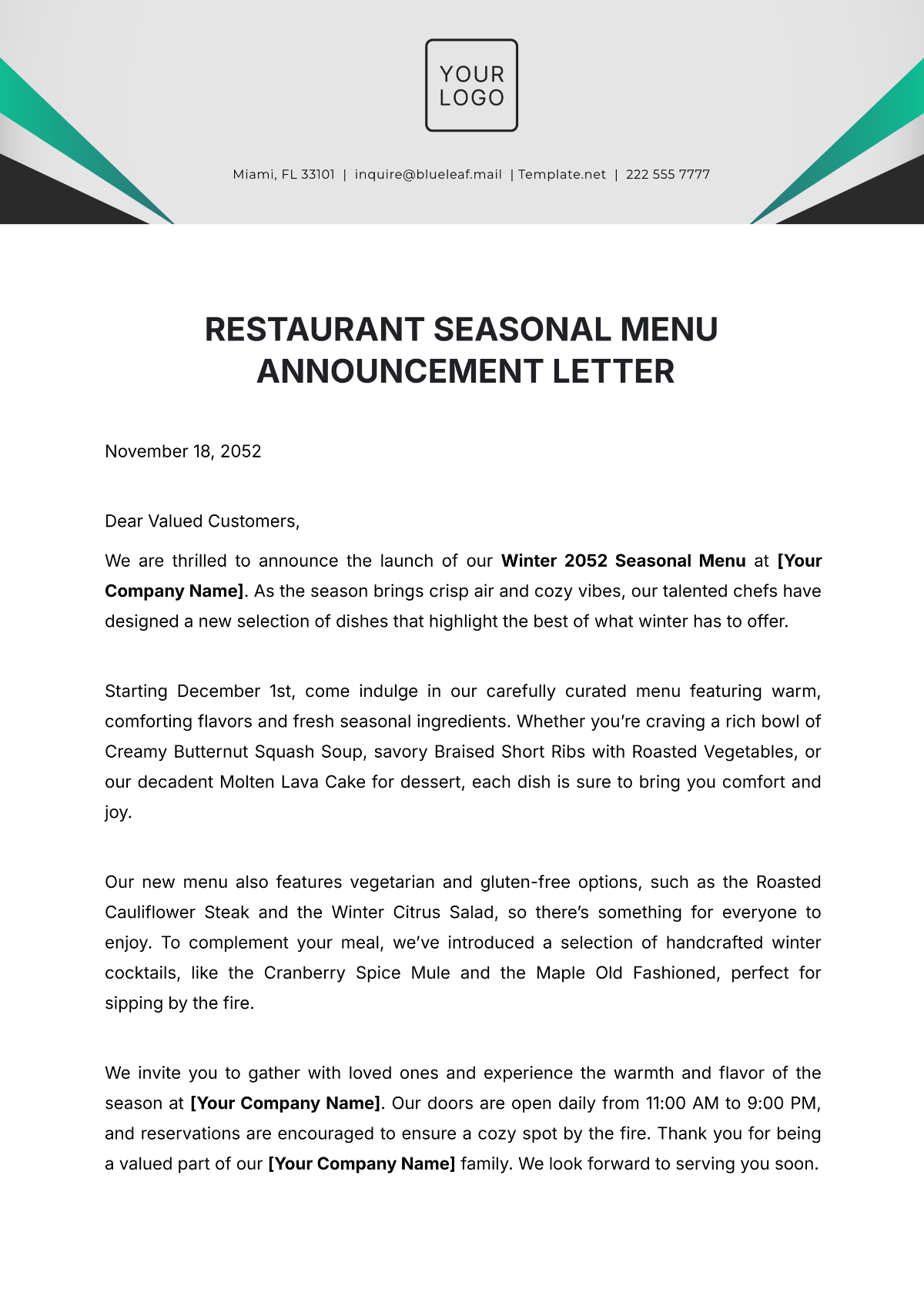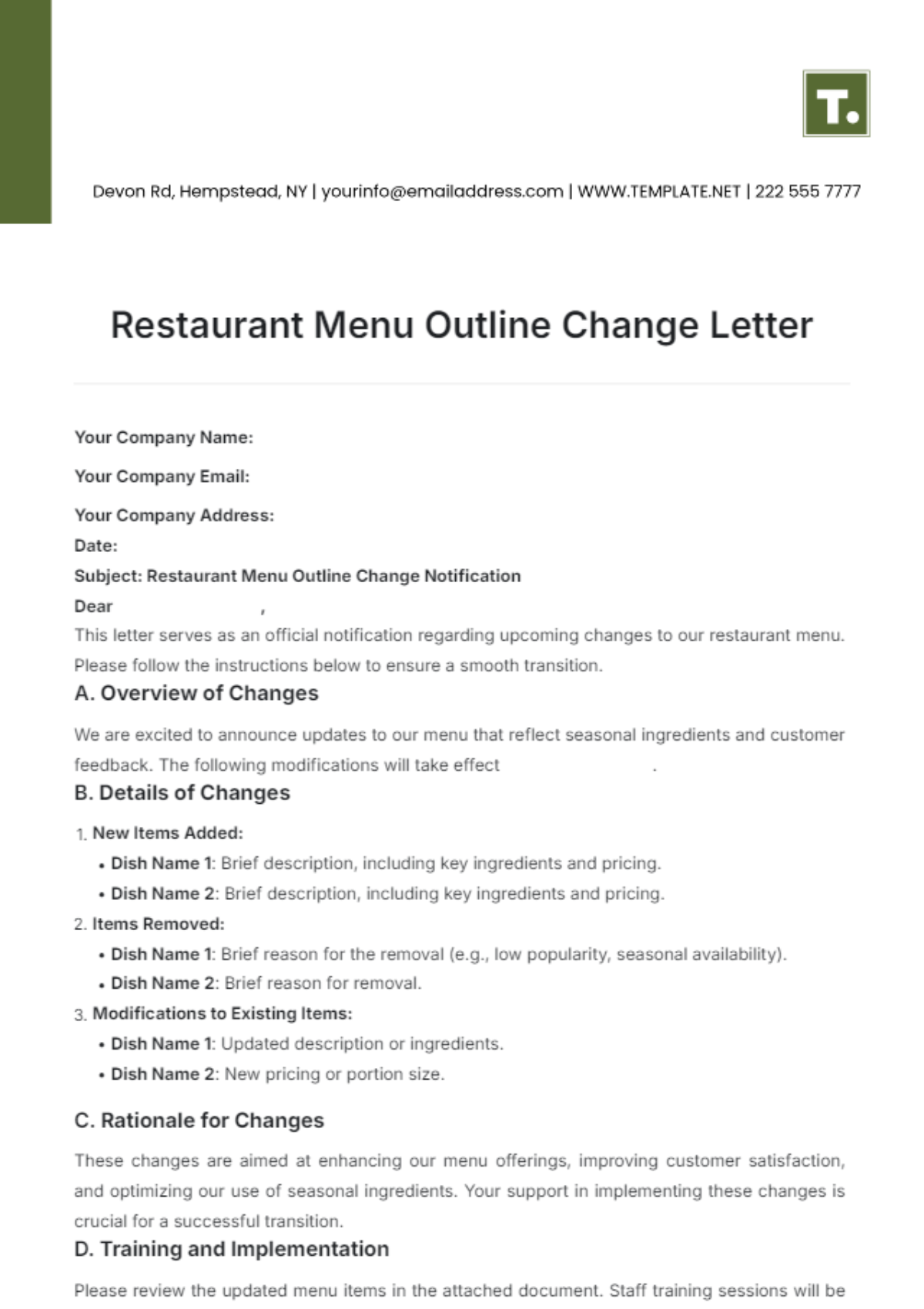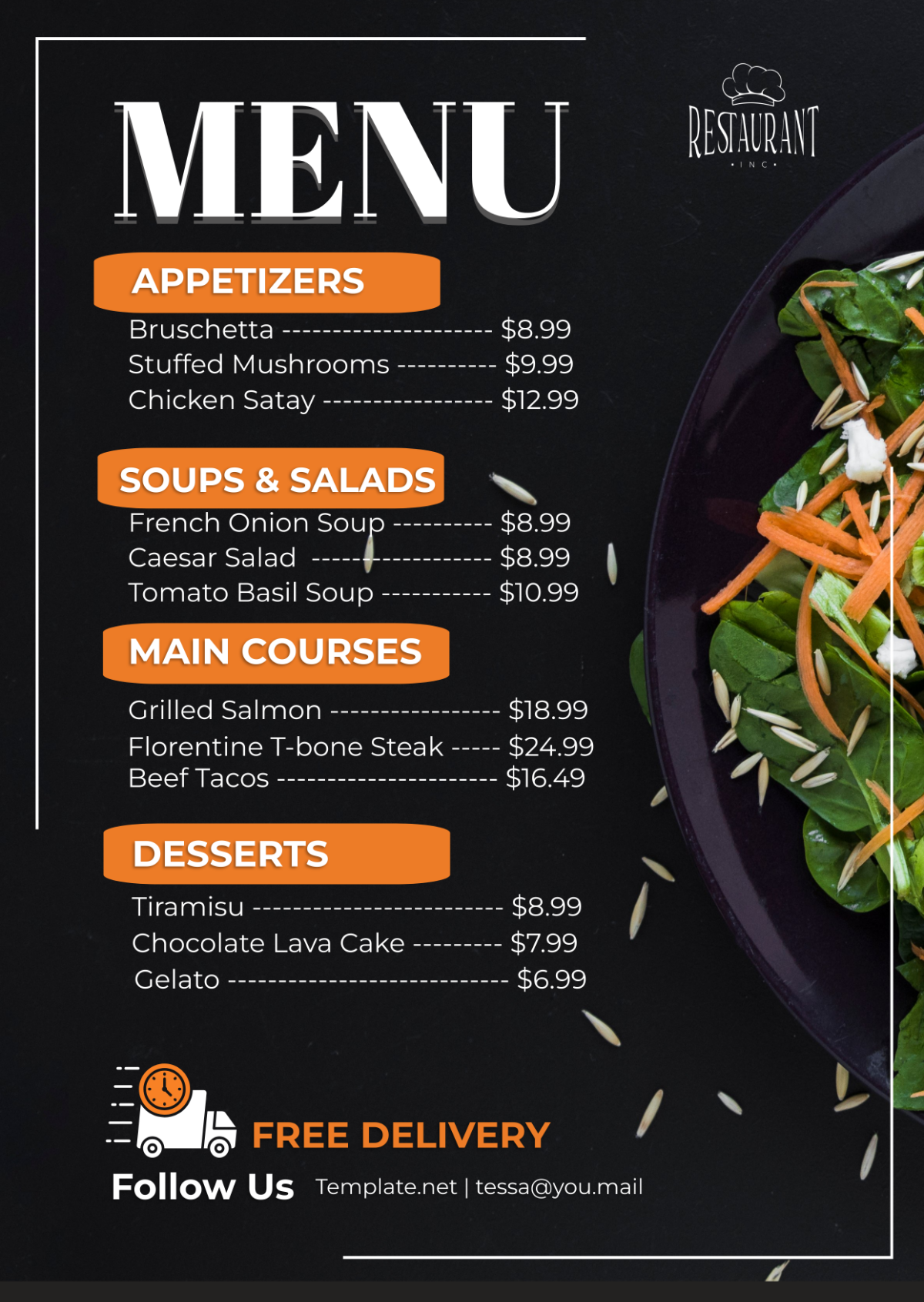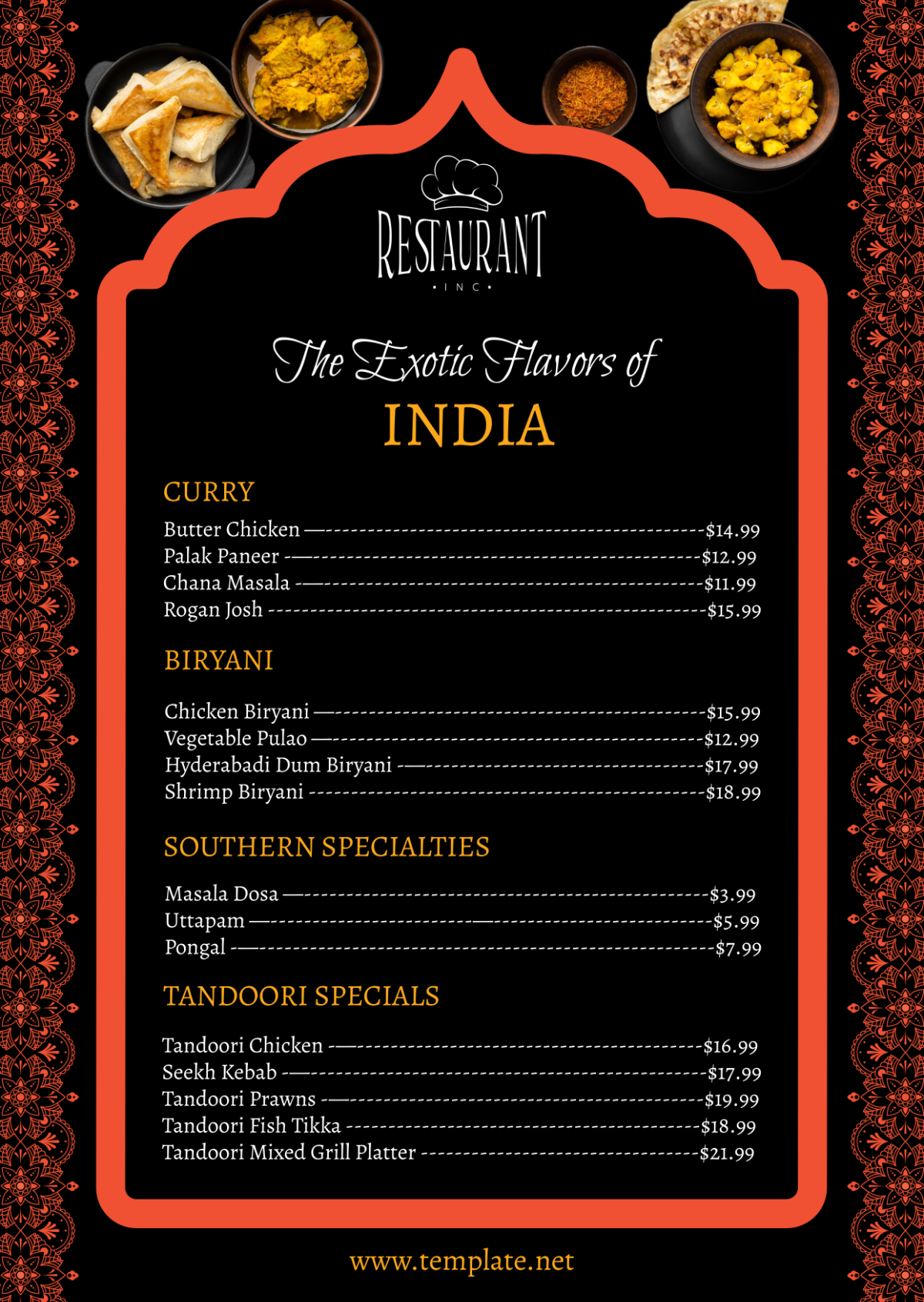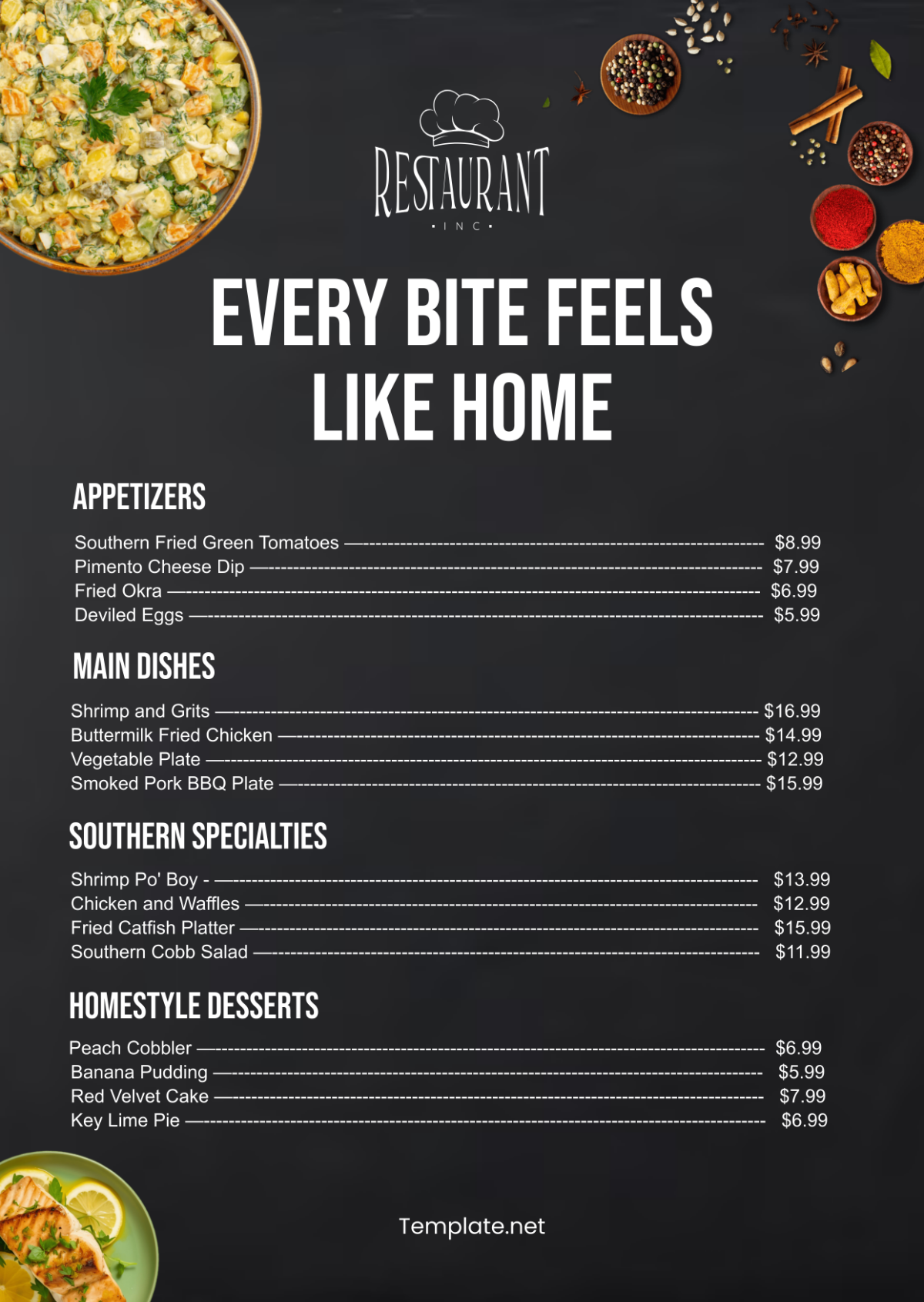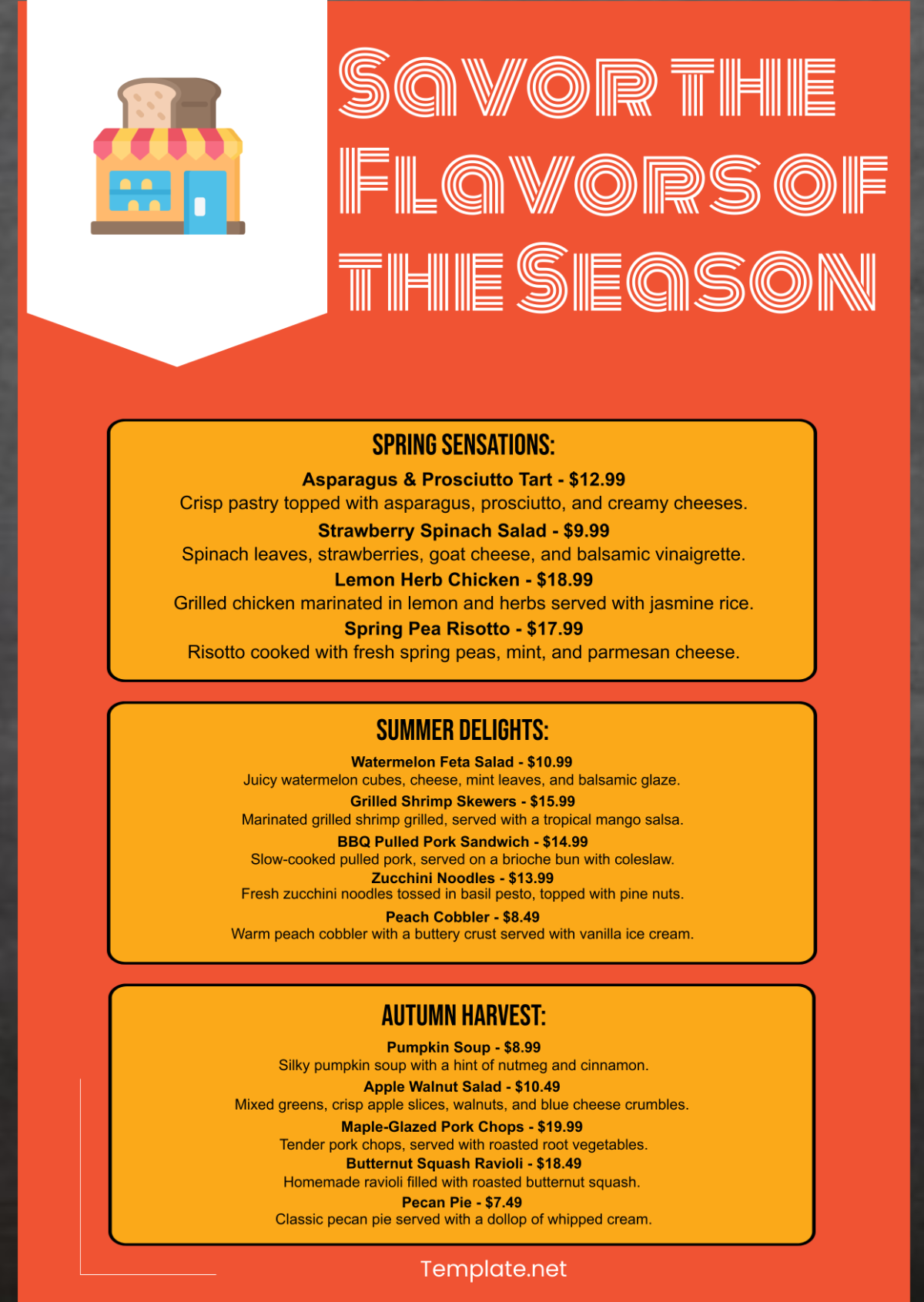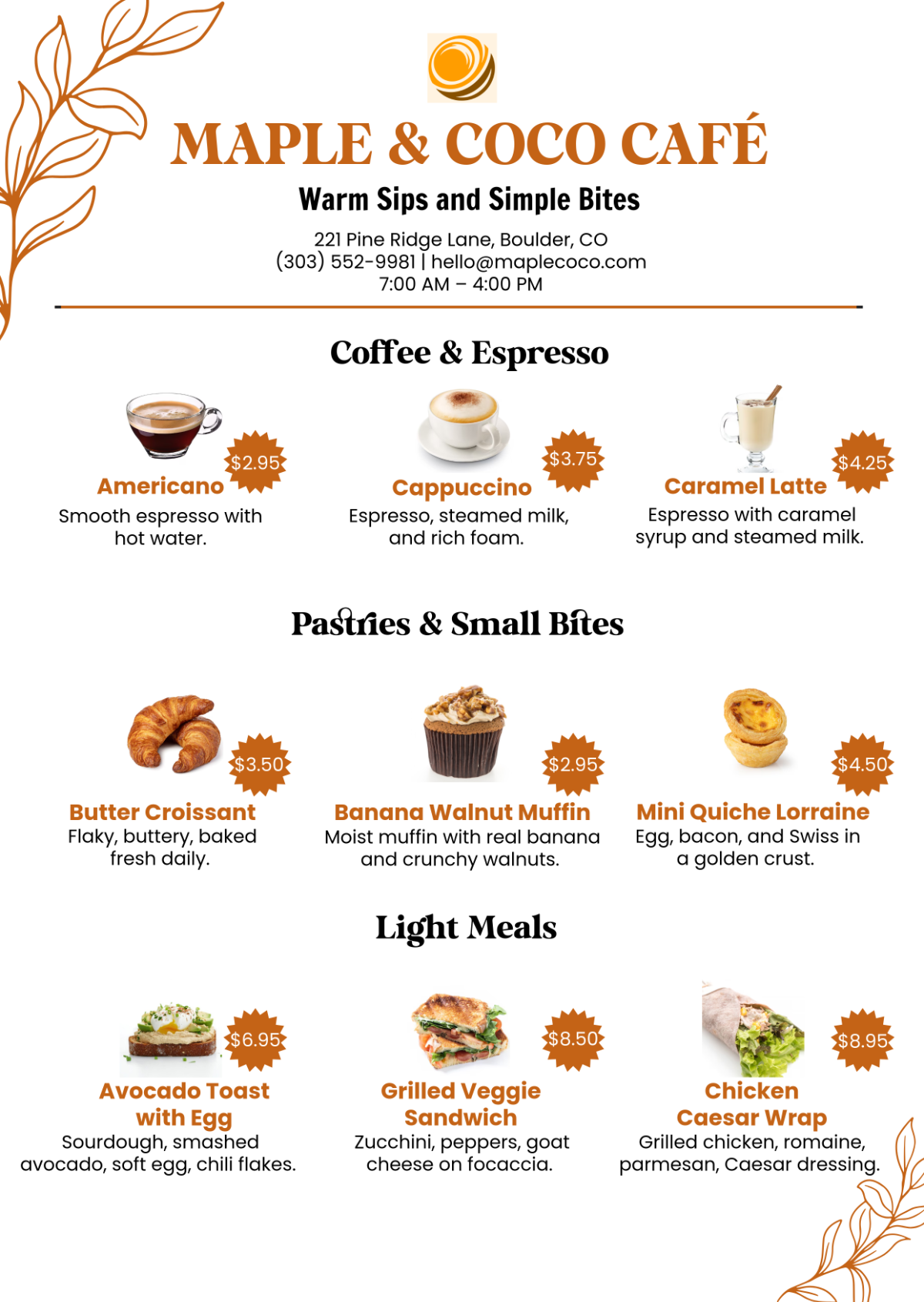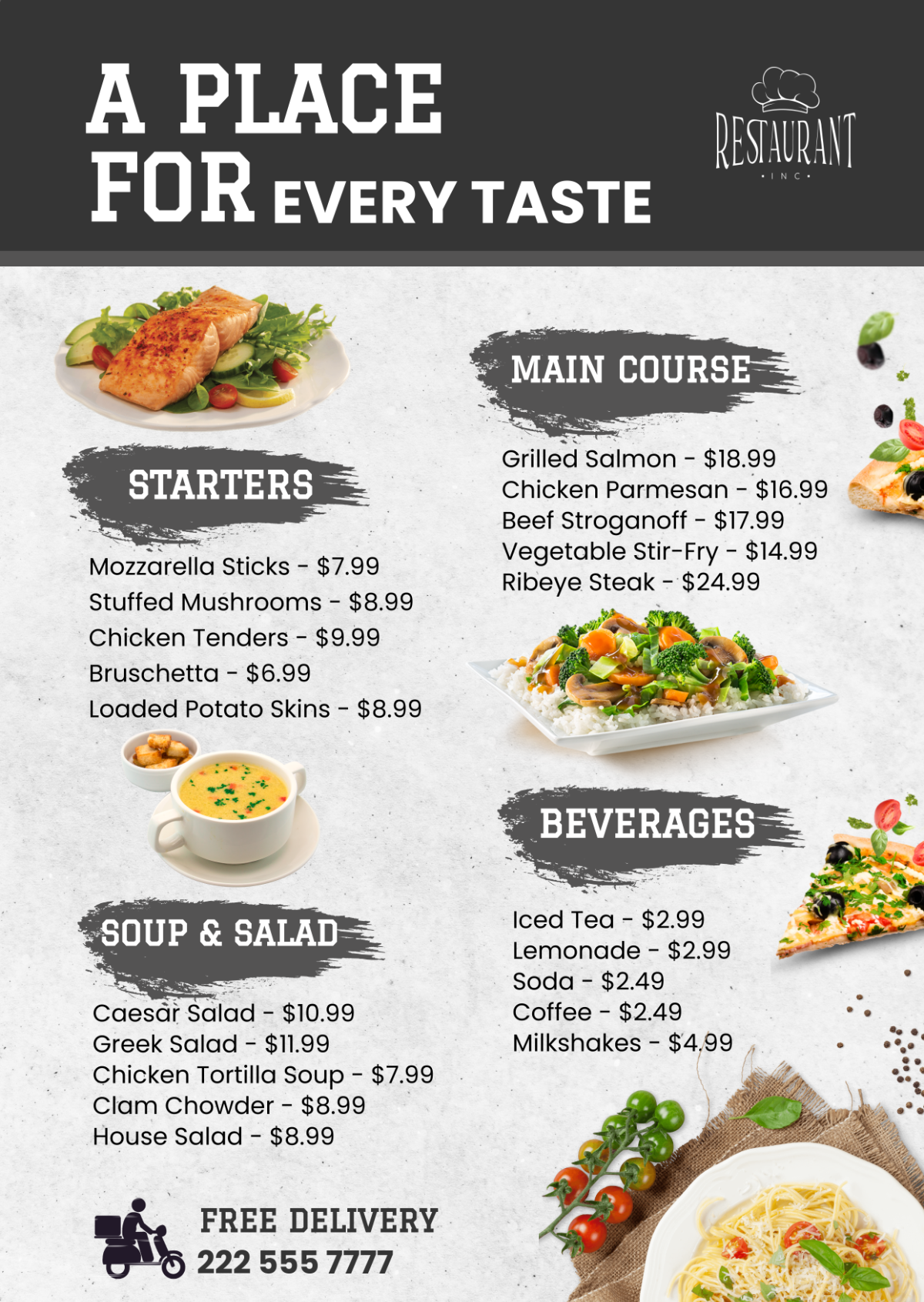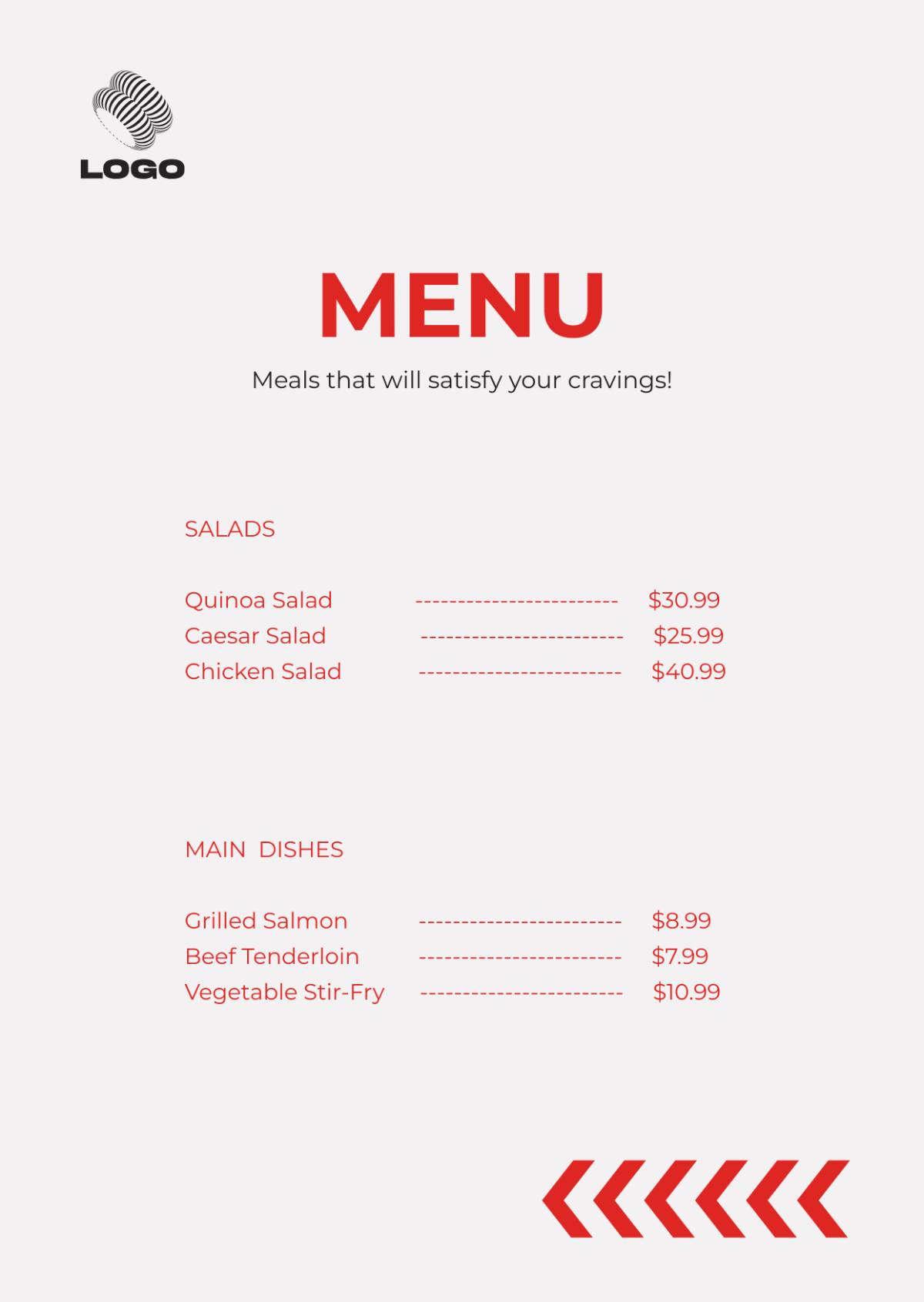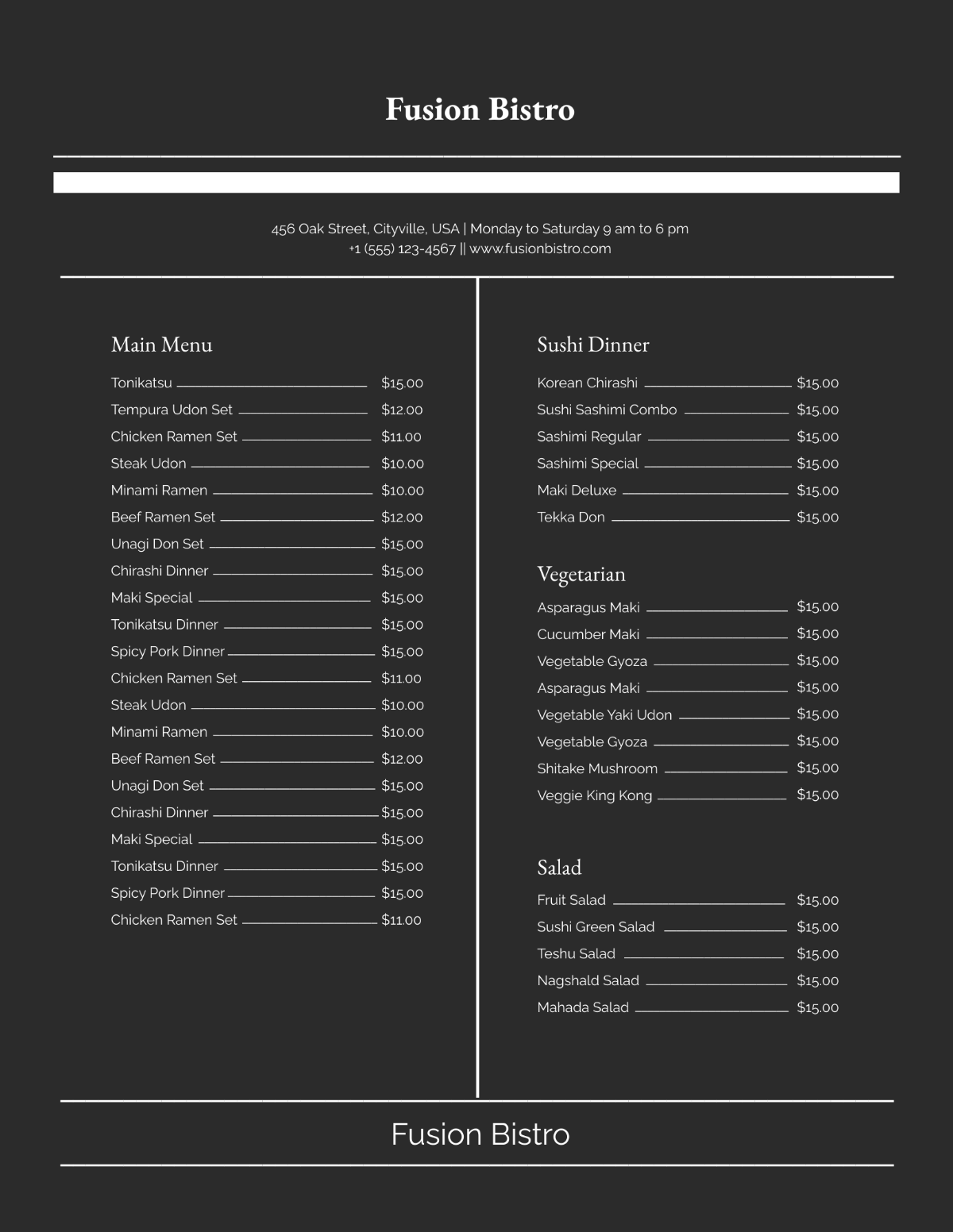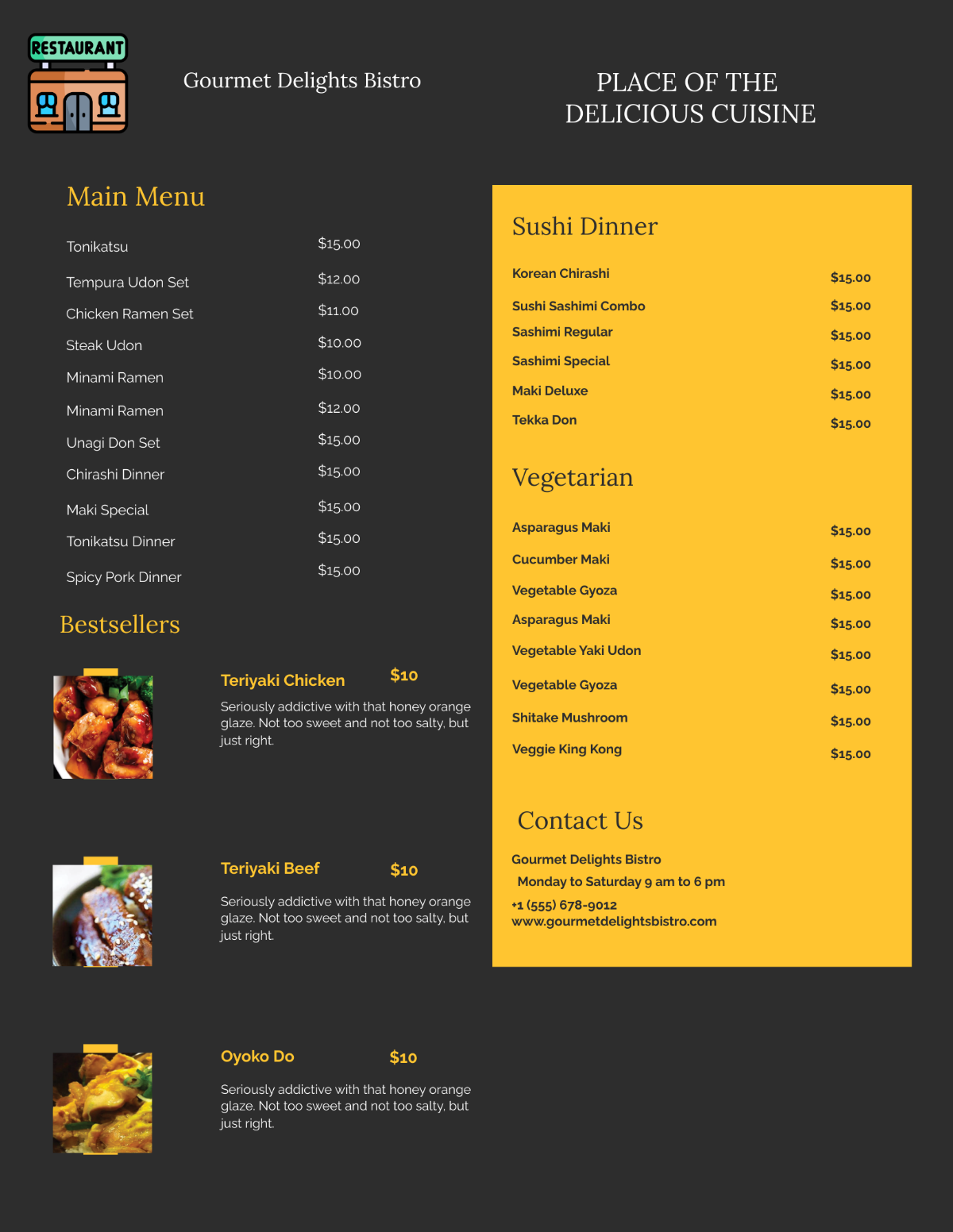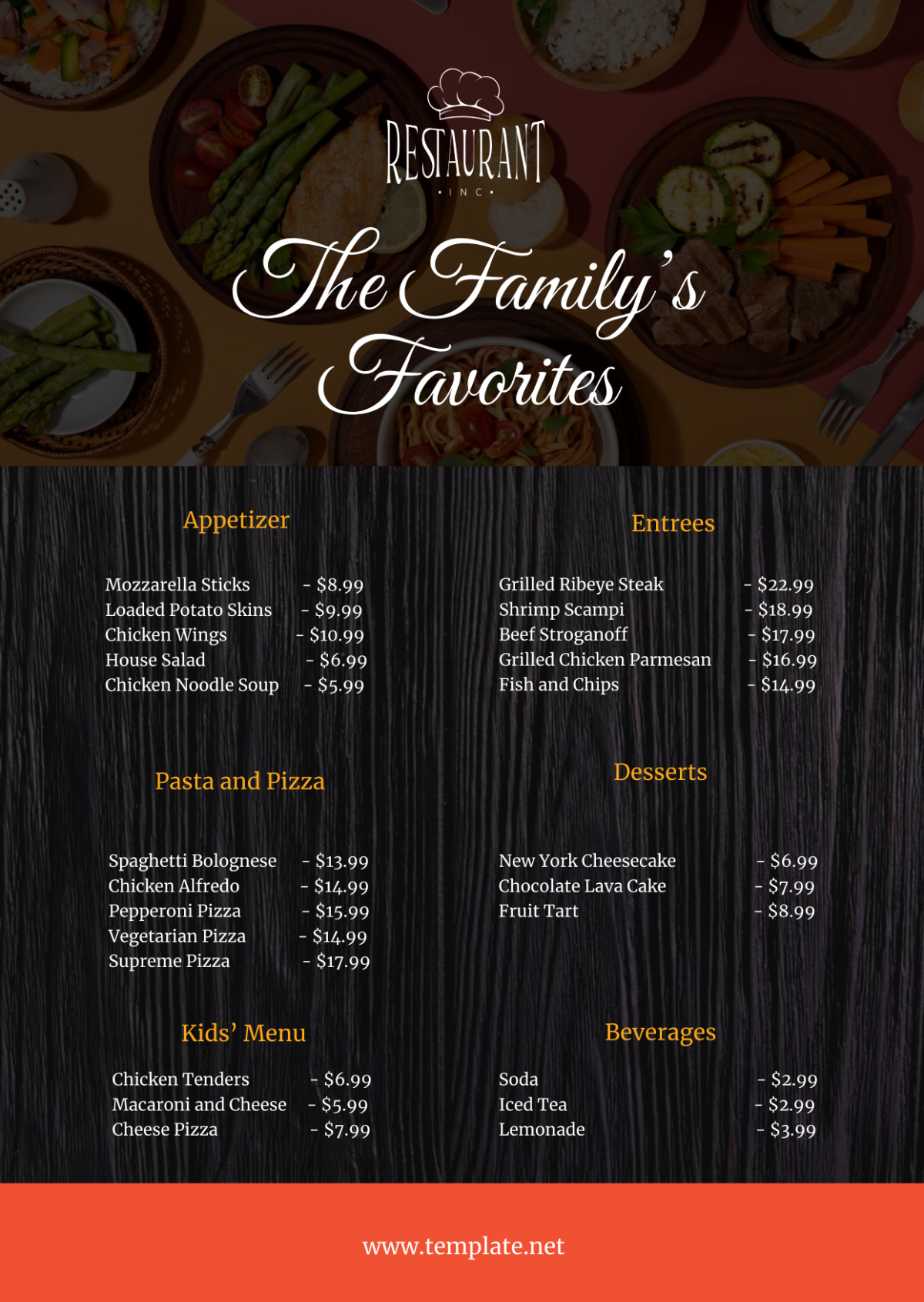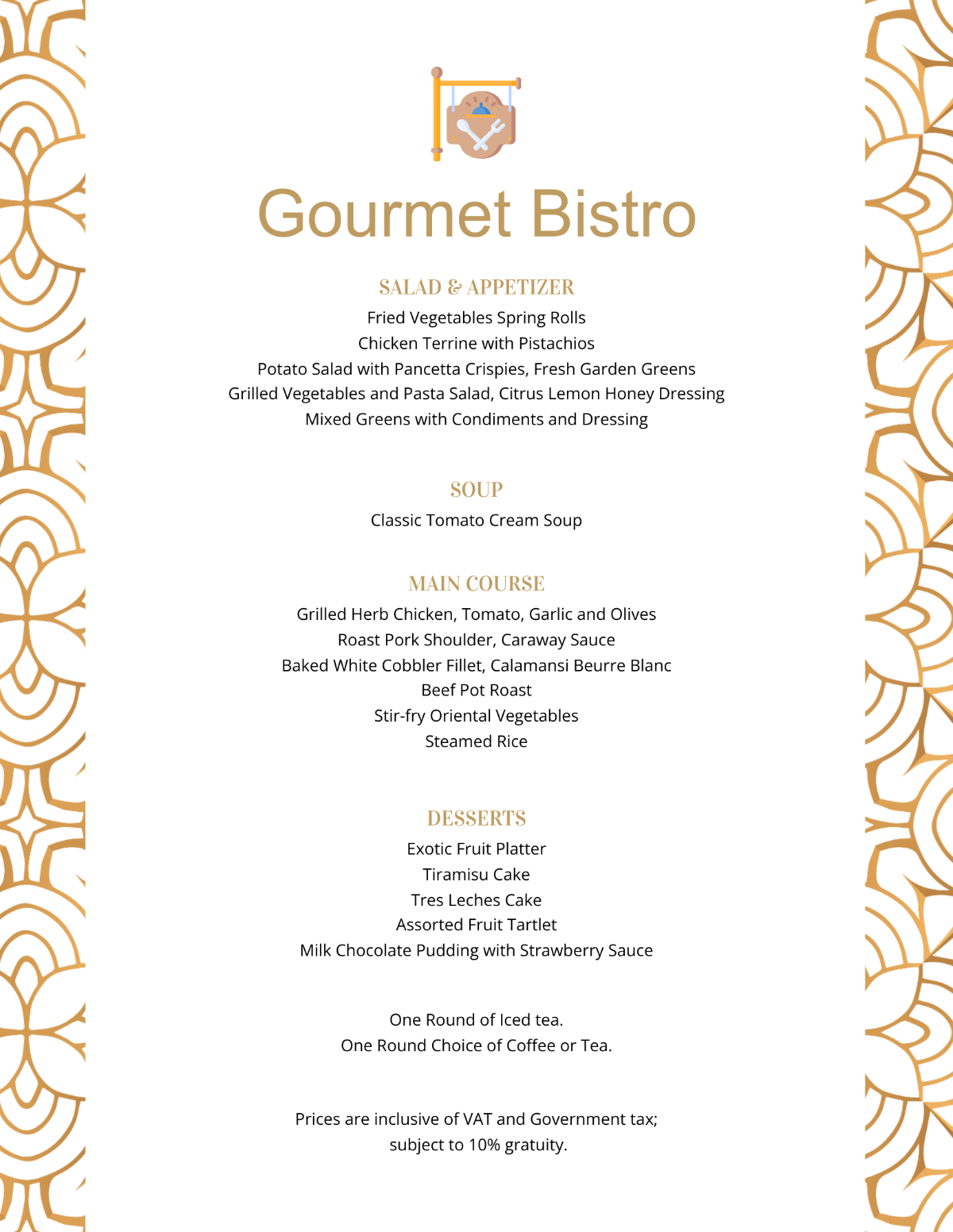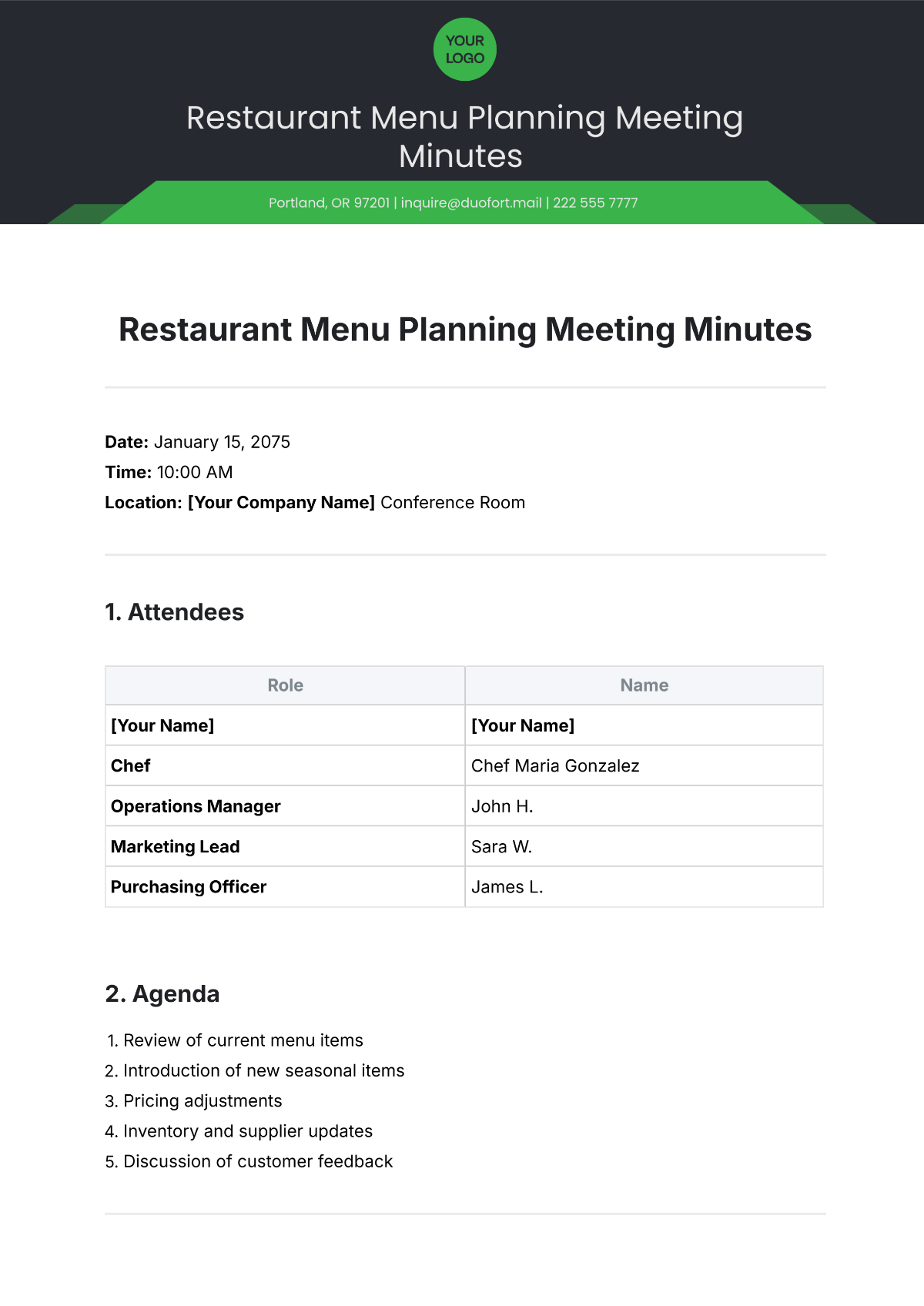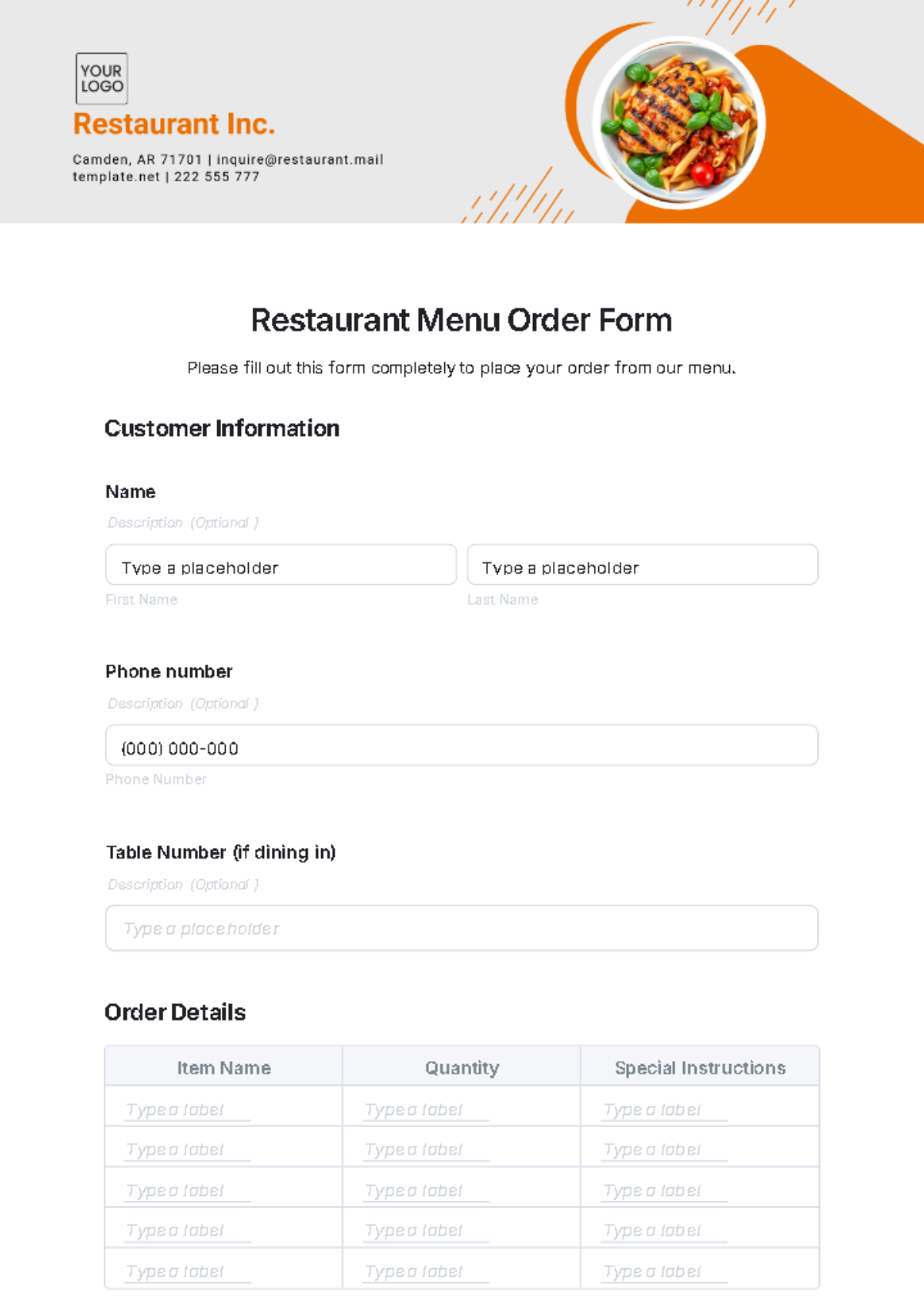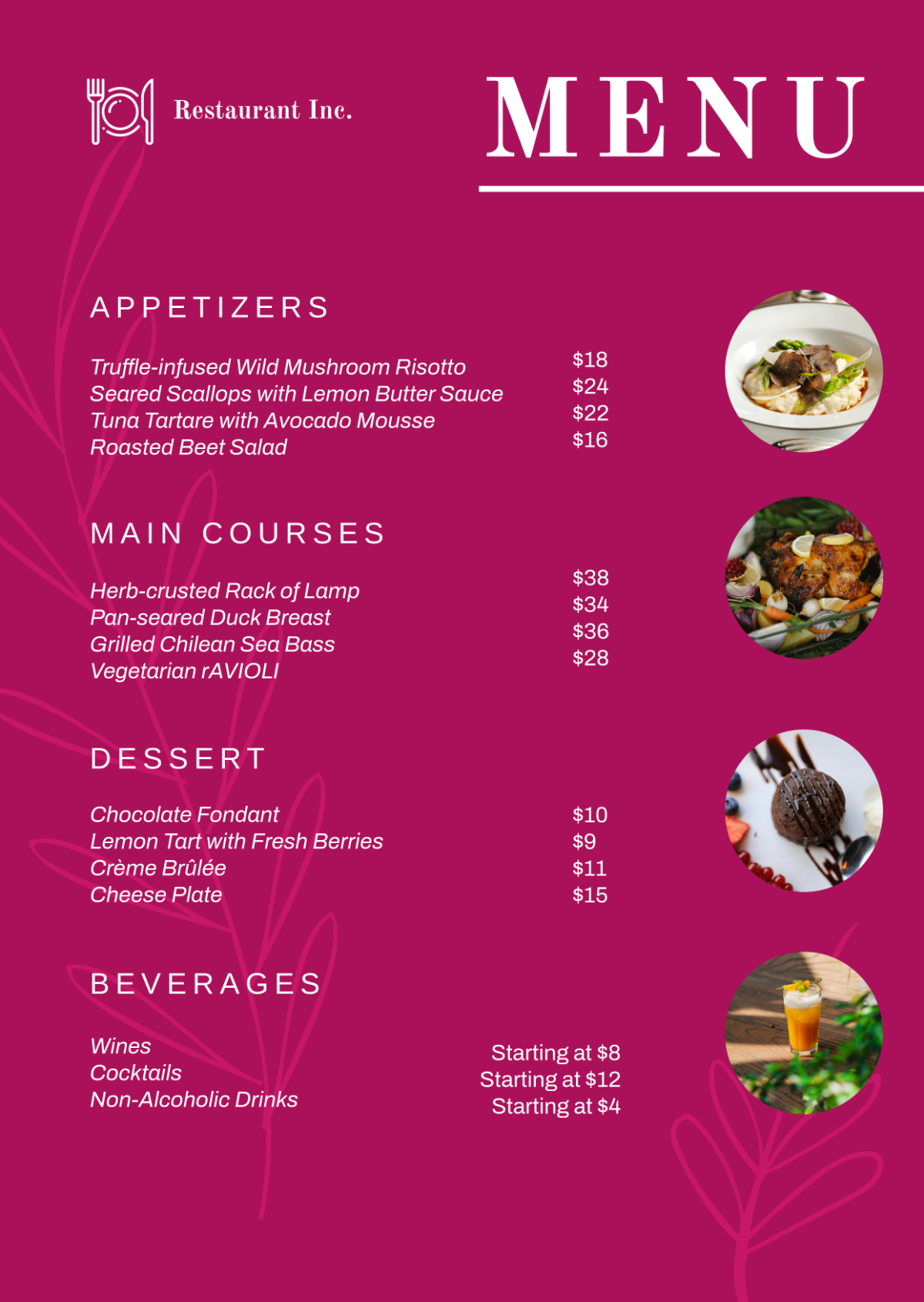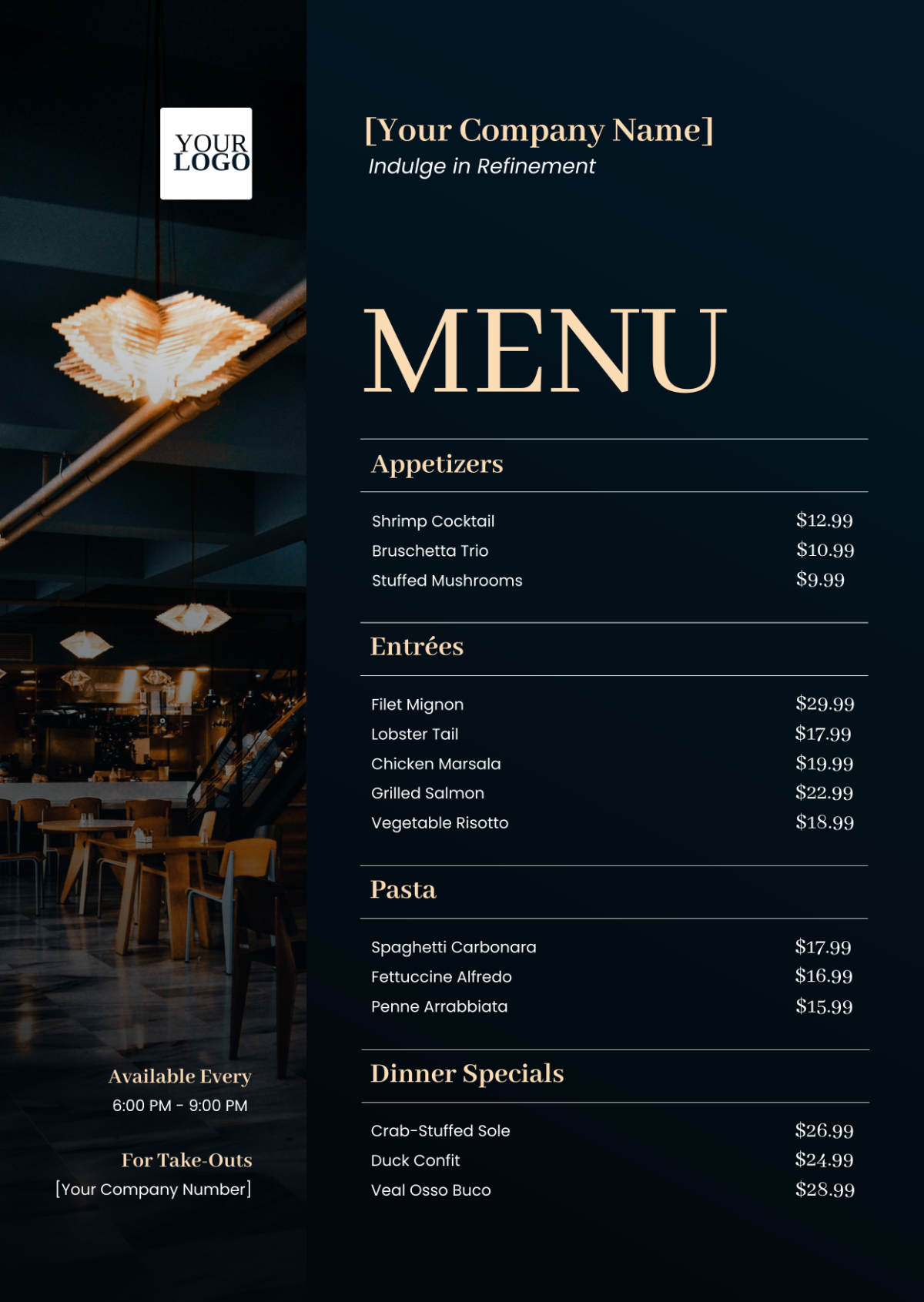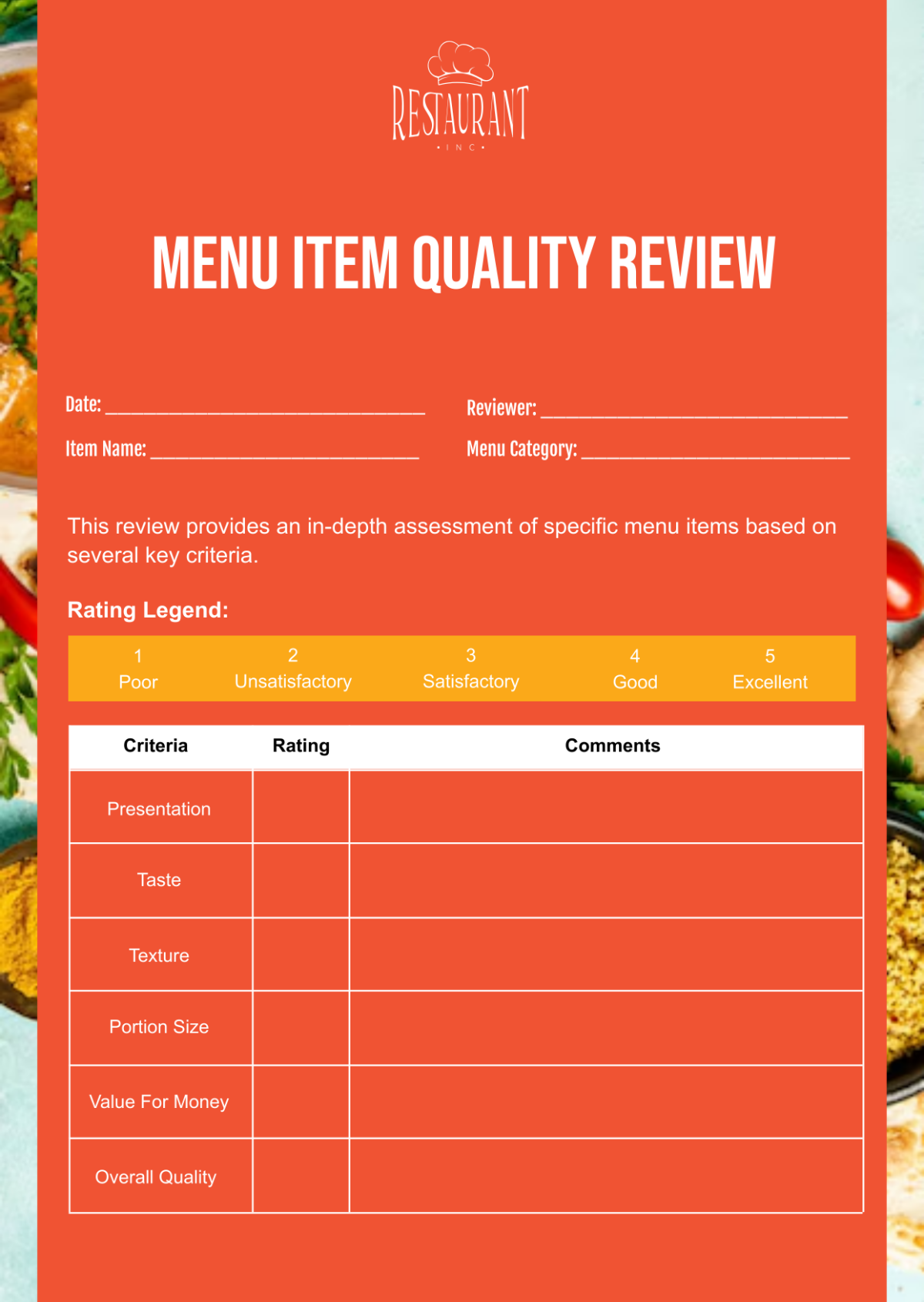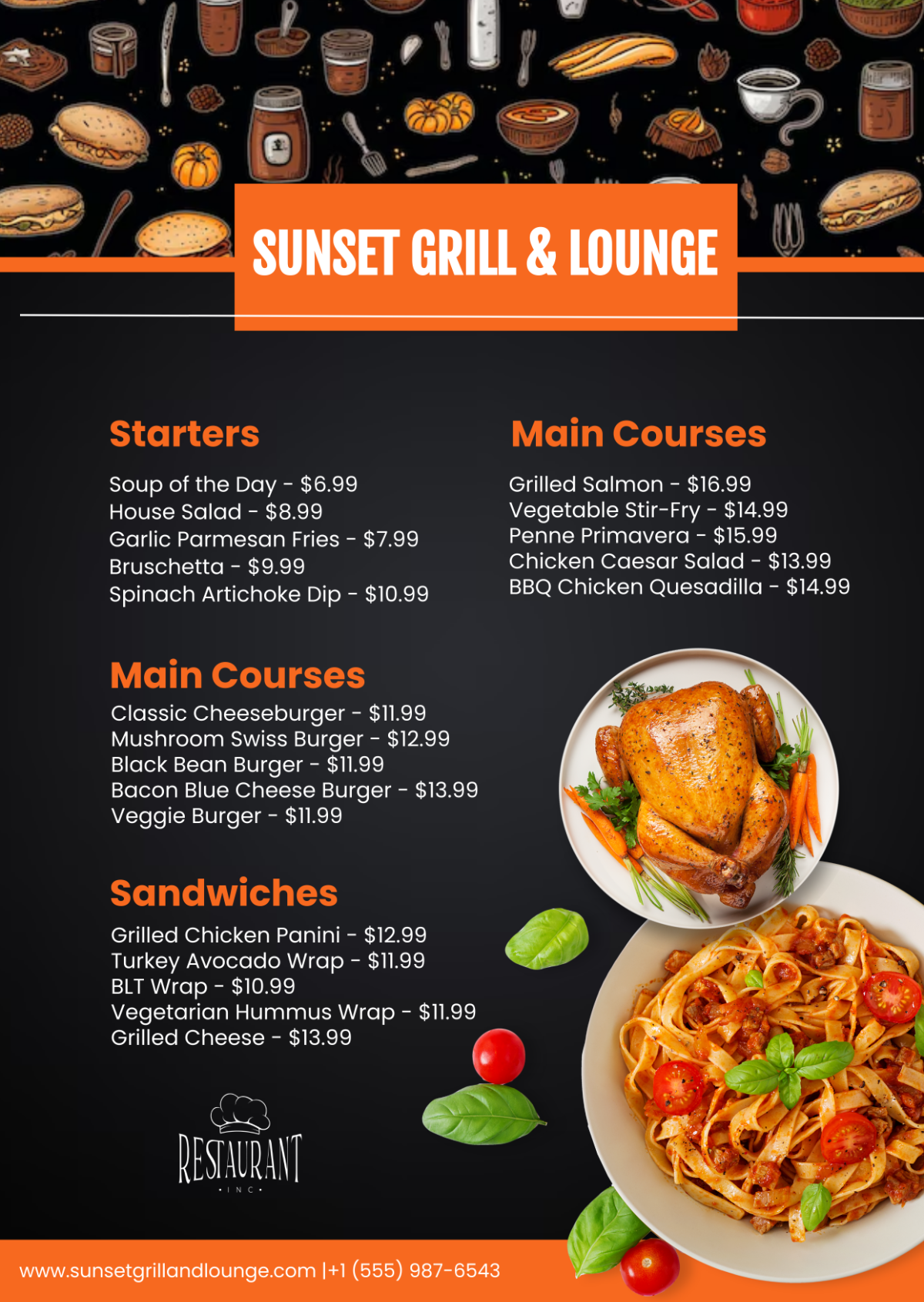Restaurant Menu Analysis Report
I. Introduction
This analysis provides an in-depth review of the current menu offerings at [YOUR COMPANY NAME]. We aim to identify high-performing dishes and those that may require revision or removal based on a thorough assessment of their performance, customer preferences, and profitability. This strategic approach is designed to ensure that the menu remains both appealing to customers and financially beneficial to the restaurant. By integrating insights from sales data, customer feedback, and cost analyses, this report forms a cornerstone for informed decision-making regarding menu adjustments.
II. Menu Performance Overview
Overview of Menu Item Performance
A critical component of our analysis involves understanding how individual menu items perform in terms of sales volume and customer preference. This data not only helps us pinpoint our bestsellers but also highlights items that may not be meeting sales expectations, providing a clear indication of customer preferences and market trends.
Table 1: Sales Volume and Popularity
Menu Item | Category | Sales Volume | Percentage of Total Sales |
|---|---|---|---|
Spaghetti Carbonara | Main Course | 1,200 units | 15% |
Caesar Salad | Starter | 800 units | 10% |
Chocolate Lava Cake | Dessert | 900 units | 11% |
Grilled Salmon | Main Course | 600 units | 7.5% |
Analysis of Table 1: Table 1 showcases the standout items like Spaghetti Carbonara and Chocolate Lava Cake, which are clear favorites among our patrons, indicating their high appeal. Conversely, items like Grilled Salmon, while moderately popular, may require further marketing efforts or promotional strategies to boost their sales.
Profitability Analysis
Beyond popularity, it is essential to assess the profitability of each menu item. This involves examining the cost of production against the selling price to determine the profit margin, which helps in identifying which items are financially viable and which may be costing us more than they yield.
Table 2: Profitability Analysis
Menu Item | Cost per Unit | Price per Unit | Profit Margin |
|---|---|---|---|
Spaghetti Carbonara | $4 | $12 | 67% |
Caesar Salad | $3 | $8 | 62.5% |
Chocolate Lava Cake | $2 | $6 | 67% |
Grilled Salmon | $5 | $15 | 67% |
Analysis of Table 2: The profitability analysis in Table 2 indicates that items like Spaghetti Carbonara and Chocolate Lava Cake not only enjoy popularity but also offer high profit margins. These insights suggest they are key assets to our menu. However, the Caesar Salad, despite a lower margin, plays a critical role in attracting customers seeking lighter, more affordable options.
III. Customer Feedback and Preference Trends
Customer Feedback Collection
Gathering and analyzing customer feedback is crucial for understanding how our menu items resonate with our guests. Feedback helps us gauge customer satisfaction, identify areas for improvement, and better align our offerings with customer expectations.
Table 3: Customer Feedback Distribution for [YEAR]
Source | Responses |
|---|---|
Digital Reviews | 2,200 |
Comment Cards | 1,800 |
Social Media | 2,500 |
Analysis of Table 3: Table 3 illustrates the extensive reach and active participation of our customers across various feedback platforms. This engagement provides a rich data source for understanding customer sentiments and preferences, which is instrumental in shaping our menu strategy.
Feedback Analysis
Analyzing the feedback received is key to understanding the strengths and weaknesses of our menu items. This analysis includes reviewing average ratings and specific comments, both positive and negative.
Table 4: Customer Satisfaction Metrics for [YEAR]
Menu Item | Average Rating | Positive Feedback | Negative Feedback |
|---|---|---|---|
Spaghetti Carbonara | 4.8 | 95% | 5% |
Caesar Salad | 4.0 | 75% | 25% |
Chocolate Lava Cake | 4.9 | 98% | 2% |
Grilled Salmon | 4.7 | 90% | 10% |
Analysis of Table 4: The feedback in Table 4 demonstrates high customer satisfaction, particularly with the Chocolate Lava Cake and Spaghetti Carbonara, which receive stellar ratings and positive comments. The Caesar Salad, however, shows a significant amount of negative feedback, suggesting potential areas for recipe improvement or presentation enhancement to better meet customer expectations.
IV. Menu Optimization Strategies
Strategic Menu Adjustments
To optimize our menu for profitability and customer satisfaction, we apply a data-driven approach, leveraging the insights gained from the previous analyses. Here, we outline targeted strategies for enhancing menu performance based on sales figures, profitability data, and customer feedback.
High-Performance Enhancements
For dishes that are both popular and profitable, such as Spaghetti Carbonara and Chocolate Lava Cake, we consider strategies to enhance their visibility and attractiveness:
Promotional Offers: Implement targeted promotions such as 'Chef’s Specials' to increase visibility.
Upselling Opportunities: Train staff to upsell these dishes with high-margin beverages or complementary sides.
Improvement Opportunities for Low Performers
Items like the Caesar Salad, which show lower profitability and satisfaction, may benefit from specific interventions:
Recipe Optimization: Revise the recipe or presentation to improve taste and visual appeal, based on customer feedback.
Cost Analysis: Review ingredient sourcing and preparation methods to reduce costs and improve the profit margin without compromising quality.
Menu Diversification
Introducing new items that align with current food trends—such as plant-based options or gluten-free dishes—can attract a broader customer base and cater to changing dietary preferences. Periodic menu refreshes help keep the offerings exciting and dynamic, encouraging repeat visits.
V. Marketing and Promotional Tactics
Leveraging Insights for Marketing
With a clear understanding of which menu items are favored by our customers, our marketing strategies can be more precisely targeted to highlight these dishes and attract new patrons through various channels.
Digital Marketing
Social Media Campaigns: Showcase popular dishes with high-quality images and engaging content to stimulate interest and sharing among followers.
Email Marketing: Send out monthly newsletters featuring menu specials, customer favorites, and promotional offers to keep the restaurant top-of-mind for our subscribers.
Local Outreach
Community Events: Participate in local food fairs and festivals to promote our signature dishes and draw a local crowd.
Partnerships: Collaborate with nearby businesses and organizations to offer special promotions and introduce our menu to a new audience.
Feedback-Informed Promotions
Utilizing the rich feedback data, create promotions that directly address the desires and interests of our customers, such as themed dining nights or limited-time offers on highly-rated dishes.
VI. Conclusion and Recommendations
Review of Findings
This comprehensive analysis has shown that while certain menu items like Spaghetti Carbonara and Chocolate Lava Cake perform exceptionally well both in popularity and profitability, others like Caesar Salad could benefit from strategic enhancements. The feedback collected has provided invaluable insights into customer preferences, guiding our decisions on menu adjustments and marketing strategies.
Strategic Recommendations
Based on the analysis, the following strategic recommendations are proposed to enhance the menu and drive further success:
Focus on High-Performers: Continue to promote and possibly expand the offerings around our most popular and profitable items to maximize revenue.
Revise Underperformers: Update or possibly replace underperforming dishes based on customer feedback and cost-effectiveness analyses.
Menu Innovation: Regularly introduce new dishes that align with emerging culinary trends and customer dietary preferences to keep the menu fresh and exciting.
Enhanced Marketing Efforts: Increase marketing efforts around popular items and new introductions to ensure they gain maximum visibility and traction.
Future Monitoring and Evaluation
Ongoing monitoring and evaluation of the menu's performance are crucial. Regularly scheduled reviews, aligned with the collection of customer feedback and sales data, will ensure that the menu remains aligned with customer desires and business objectives. This will also allow for timely adjustments in response to any shifts in market trends or customer preferences.
Immediate Actions
Menu Refresh Initiative: Begin the development and testing of new menu items in the next quarter, with a focus on incorporating feedback and trends.
Marketing Campaign Launch: Roll out a new marketing campaign focusing on revised and new menu items by the start of the next quarter to generate buzz and attract customers.
Staff Training: Enhance staff training on upselling techniques and product knowledge to ensure effective promotion of the revised menu.
In conclusion, this menu analysis report for [YOUR COMPANY NAME] highlights several opportunities for improvement and growth. By strategically adjusting our menu and marketing approaches based on detailed analysis and customer feedback, we can enhance customer satisfaction, increase profitability, and ensure the long-term success of our restaurant.
For further information, please contact [YOUR COMPANY NAME] at [YOUR COMPANY EMAIL] or visit our website at [YOUR COMPANY WEBSITE].









